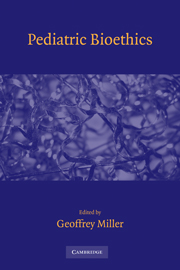18 - Brain Death, Minimal Consciousness, and Vegetative States in Children
Published online by Cambridge University Press: 07 May 2010
Summary
Various groups treat death in different ways. Medically, death is the diagnosis of a biological event. To the philosopher, people's interests and the obligations owed them are usually thought to depend on certain qualities possessed only by the living. In religious traditions, death may simply be a transition. To the anthropologist, it is a social event and the beginning of a ceremonial process. Legally the presence and determination of death are necessary when the decision is made as to whether the cause was natural, accidental, homicide, or suicide; when vital organs can be harvested for transplantation; when burial, cremation, or autopsy can occur; when inheritances must be determined; when a spouse can remarry; and when an individual can bring an action in his or her own right. Every culture has customs, norms, rituals, and ethical requirements and prohibitions surrounding death. In modern society, these requirements and prohibitions have been complicated by the ability to keep alive individuals who, in previous circumstances, would have died without intervention. In times past, the traditional approach to the recognition of death relied on the irreversible cessation of heart and lung function. A person would be seen to be unconscious and in a state resembling death, and another person, who was not necessarily a physician, would feel for a pulse, listen with his or her ear to the chest, and look for condensation on a mirror placed close to the nose and mouth. If no evidence of heartbeat or respiration was heard, felt, or seen, death was presumed present, and the passage of time would usually confirm this. There was not absolute public trust in this method, and some feared premature burial.
Keywords
- Type
- Chapter
- Information
- Pediatric Bioethics , pp. 247 - 261Publisher: Cambridge University PressPrint publication year: 2009
- 2
- Cited by



